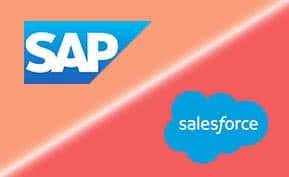Rolling Forecasts vs. Static Budgets: How Modern FP&A Software Changes the Game
Why Static Budgets Keep Failing Finance Teams
Most companies still spend months building an annual budget that’s obsolete by Q2. Assumptions change, markets move and new initiatives appear, but the budget stays frozen. Finance ends up explaining variance instead of guiding decisions. That’s why high-performing FP&A teams are shifting from static budgets to rolling forecasts that update continuously with help from modern planning software.
What Is a Rolling Forecast?
A rolling forecast is a living financial model that always looks a fixed number of periods into the future — for example, the next 12 or 18 months. Instead of locking in one annual plan, you extend the forecast every month or quarter. As new actuals come in, FP&A updates assumptions, refreshes drivers and gives leadership an always-current view of revenue, spend and cash.
Key Differences: Static Budget vs. Rolling Forecast
A static budget is typically:
- Built once per year with heavy manual work in spreadsheets.
- Tied to a specific fiscal year and rarely revisited at a granular level.
- Focused on cost control more than opportunity capture.
A rolling forecast, by contrast, is:
- Updated frequently using FP&A software that automates data refresh and consolidation.
- Anchored in drivers like headcount, pipeline, pricing and unit economics.
- Used as a decision tool for resource allocation, not just a target to compare against.
How FP&A Platforms Make Rolling Forecasts Practical
Rolling forecasts stalled for years because spreadsheets were too slow and fragile. Modern FP&A platforms change that by connecting directly to ERP, CRM and HR systems, so actuals flow in automatically. Planners can build driver-based models with pre-defined templates, push versions to business partners and run scenarios without breaking links or formulas.
Instead of copying and pasting, finance teams spend time choosing better drivers, stress-testing assumptions and explaining what the forecast means for hiring, marketing and capital spend.
Designing a Driver-Based Rolling Forecast
The power of rolling forecasting comes from focusing on a handful of meaningful drivers. Examples include:
- Revenue drivers: sales pipeline by stage, win rates, average deal size, churn and expansion for subscription businesses.
- Cost drivers: headcount by team, compensation bands, vendor contracts, unit costs for materials and logistics.
- Operational drivers: production volumes, utilization, customer acquisition and retention metrics.
FP&A software lets you link line items to these drivers. When sales win rate or hiring plans shift, you can instantly see the impact on the P&L, cash and headcount budget.
Cadence and Governance for Rolling Forecasts
Rolling forecasting only works if you define a clear cadence and governance model. Many companies adopt a monthly “light touch” that refreshes key drivers and a deeper quarterly cycle where FP&A and business leaders review targets, risks and upside. Finance determines which inputs business owners can edit and which are centrally controlled. The FP&A platform then enforces permissions, workflow and version control.
Using Scenarios to Navigate Uncertainty
Rolling forecasts shine in volatile environments because you can spin up alternative views of the future. For example:
- A downside scenario with slower demand and tighter credit.
- An upside scenario with accelerated pipeline and strategic hires.
- A base case used for guidance and internal targets.
FP&A teams compare scenarios side by side inside the planning tool, highlighting where to pull back spend, which roles to delay hiring for and which growth bets to protect.
Change Management: Bringing Business Partners Along
Finance can’t implement rolling forecasts alone. Sales, marketing, operations and HR need to participate in updating drivers and explaining variance. The more intuitive your software interface, the easier it is to get non-finance stakeholders engaged. Train them on how to update their assumptions, not just on where to click. Celebrate quick wins where rolling forecasts prevented over-hiring or revealed room for strategic investments.
KPIs to Measure Rolling Forecast Success
Track metrics like:
- Forecast accuracy at revenue, margin and cash levels.
- Cycle time to produce each forecast update.
- Percentage of cost base linked to drivers instead of static percentages.
- Business participation rates in forecasting cycles.
When you see cycle times shrinking and accuracy stabilizing, you know the process — and the technology — are working.
Final Thoughts
Rolling forecasts move FP&A from scorekeeping to strategy. With the right driver-based models and modern planning software, finance leaders can give executives a continuously updated view of the road ahead — and become a true partner in steering the business, not just reporting on where it’s been.







